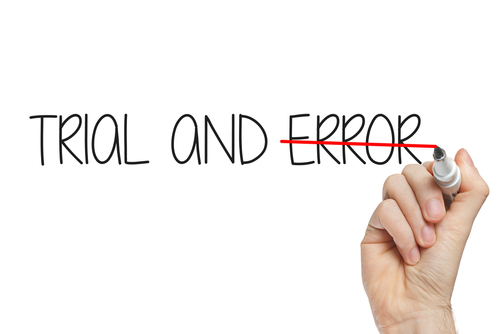Laurie's Blogs.
Jul 2017
Trial & Error OR Trial & Success!

I recently treated a human.
What? A human?
Yes! A real human that was actually happy to have me work on her!
Here’s the story. The human in question is a therapist that works with me at my clinic. She was walking her dog, and her arm was out to the side and yanked backward horizontally all of the sudden when her dog at the end of the leash ran backwards to get away from a charging terrier! It sore a bit then, but no pop, and no excruciating pain. However, by the next day her shoulder was ANGRY! Road-rage kind of angry! Any movement cause pain. Doing nothing was painful. Everything was painful. Off to the doctor she went, who prescribed Naproxen and figured that an ultrasound would be in order, and provided a requisition. But the pain was just intense. So, I offered to have a look, and to my surprise, she took me up on it! (My human skills are rusty, but they’re still in there – deeply ingrained!)
Okay, so when I saw my co-worker, yup, she was in pain. Any touch to the shoulder was painful. Supraspinatus, infraspinatus and all anterior, lateral, or superior pressure was painful. A tendon tear didn’t make sense given that the pain took a day to come on. I thought her shoulder felt to sit a bit anteriorly, and so I jumped into treatment mode. Did I do all the tests? No. Did I do a full screen? No. Did I go with my gut, base my decision on past experiences, and decide that treating trumped all else? Yes. Sometimes, but not always, but sometimes you just get a feeling that fixing the situation and treating the pain is the right thing to do - first! Before all else! To put the patient through a myriad of tests would have cause more pain and would not change the plan. So why go there?
I tried tractioning the shoulder (i.e. pulling down on the arm)… that caused jolts of pain. I tried distracting the shoulder… that caused Turrets Syndrome! So, between the two of us (since she’s a physio as well), we decided that her shoulder needed to be glided posteriorly. She ‘felt’ that the humeral head was jammed up against her acromion. I said some prayers in my head, and she mentally prepared… and I glided posteriorly. I ‘grade 4’ed’ that sucker! I had to grab onto the bed with my other hand (since my abs are still healing from the surgery)! She called for a time out… and when we both recovered, her shoulder was in a different position! Okay, it still hurt, but it felt different. I decided to ‘let it breath’ for a few minutes and lasered the living daylights out of it. (Multiple points & many repetitions, 4 x 250mW, Continuous wave, 40 seconds, delivering 10J/cm2 per point, but likely delivering nearly 1000 J or more of energy in total – using my Spectravet Laser… shhhh, but it works great on humans too!)
By the time I reassessed for tenderness at the end of the session, the Turrets Syndrome was completely resolved!! I could palpate tendons, I could gently glide the glenohumeral joint, and my coworker felt hopeful! Naturally, it would take a bit more time for the inflammation to settle, but now the Naproxen could actually be helpful!
The moral of the story! 1) Sometimes you have to just treat what you suspect to be the root of the problem and/or the pain before you can do anything else. 2) Sometimes your ‘gut’ is your best diagnostic tool. 3) Sometimes attempting to treat what your ‘gut’ thinks the problem is, confirms (or negates) your suspected diagnosis.
So, there you go… I’m still learning from my human patients!
Until next time… Cheers! Laurie


